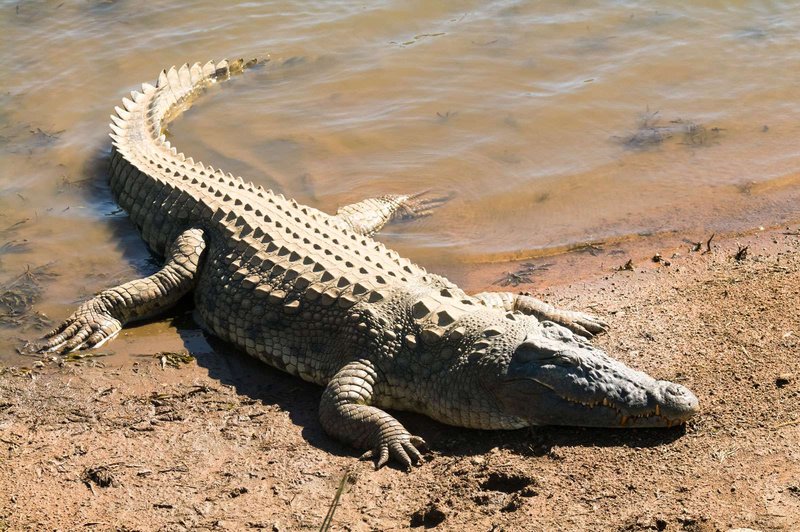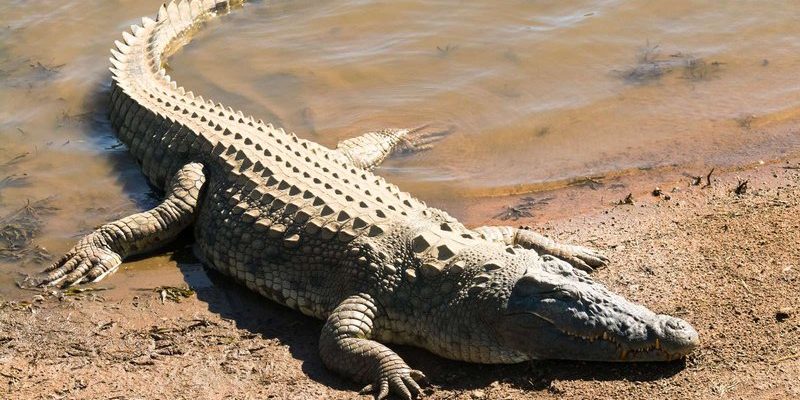
Nile crocodiles, or *Crocodylus niloticus*, have made their home in a range of habitats. From rivers to lakes and even brackish waters, these reptiles are skilled at turning any watery environment into their territory. Understanding where Nile crocodiles live helps us appreciate their role in ecosystems and the challenges they face today. So, grab a cup of coffee, and let’s explore their homes!
African Habitats of Nile Crocodiles
When one thinks of Nile crocodiles, Africa is the first continent that comes to mind. They are commonly found in the waters of countries like Egypt, Sudan, and Tanzania, among others. Lakes, rivers, and swamps provide the ideal conditions for these reptiles to thrive.
In places like the Nile River itself, these crocodiles have adapted to both freshwater and brackish water environments. They often bask on riverbanks or lurk in the water, waiting for unsuspecting prey. The crocodile’s camouflage allows it to blend into its environment, making it an effective hunter. The diverse climates across Africa—from arid regions to tropical wetlands—means these reptiles have developed a range of behaviors to survive.
You might be wondering about their mating habits. Nile crocodiles typically lay eggs in sandy nests near water. The mother fiercely guards these nests until they hatch. This protective behavior ensures that the young have a better chance of survival in the wild, where factors like predation and habitat loss can threaten their existence.
Key Areas with Significant Populations
Certain regions in Africa are known for having significant populations of Nile crocodiles. For instance, the Okavango Delta in Botswana is a critical habitat, providing a rich ecosystem filled with fish and birds. Similarly, the Zambezi River offers a perfect blend of deep waters and shallow banks, ideal for hunting.
Moving over to East Africa, places like Lake Victoria host thriving communities of Nile crocodiles. The freshwater lake is one of the largest in the world, teeming with diverse fish species, making it a feast for these reptiles. Unfortunately, the increasing human encroachment and pollution in these waters can lead to conflicts between crocodiles and humans, which is a continuing concern.
In the Kalahari Desert, surprisingly enough, you also find Nile crocodiles. While it may not seem like the ideal home for these creatures, the region has rivers and seasonal floods that create temporary habitats. This adaptability highlights their incredible survival skills.
Beyond Africa: The Global Reach of Nile Crocodiles
While most Nile crocodiles are found in Africa, their adaptability has led them to some other regions. For example, they can occasionally be spotted in the wetlands of the Mediterranean coast, particularly in Egypt and Libya. Here, these crocodiles find suitable habitats similar to their native environments.
Interestingly, Nile crocodiles can also be found in parts of Asia. Reports of them appearing in countries like Israel and even in some parts of southwestern Asia have been made. This often happens through human intervention, like the exotic pet trade or accidental releases.
You may find it surprising that Nile crocodiles have even crossed paths with tourists in some parts of the world. Eco-tourism and safaris in African countries highlight these magnificent reptiles, allowing visitors to witness them in their natural habitats, which helps raise awareness about their conservation.
Threats to Their Habitat
Despite their adaptability, Nile crocodiles face significant threats. Habitat destruction due to urban expansion, agriculture, and pollution can drastically impact their populations. As rivers are dammed or diverted, crocodiles lose their nesting grounds, leading to a decline in numbers.
Another major threat comes from poaching. Crocodile skins are highly sought after in the fashion industry, which puts these reptiles at risk. Efforts are being made in various countries to protect their populations, but it’s an ongoing challenge.
Moreover, climate change adds another layer of complexity. As temperatures rise and rainfall patterns shift, the delicate balance of their ecosystems can be disturbed. This makes it harder for Nile crocodiles to find suitable habitats.
Conservation Efforts for Nile Crocodiles
Fortunately, there’s hope for Nile crocodiles! Various conservation programs are in place to help protect these majestic reptiles. For instance, community-based initiatives in countries like Tanzania involve local people in crocodile conservation efforts. By educating communities about the importance of these animals, they’re less likely to view them as threats.
Additionally, many wildlife reserves actively manage crocodile populations, ensuring that they remain healthy and sustainable. These efforts not only focus on the crocodiles themselves but also work to preserve their habitats. Protected areas in national parks provide safe environments for them to thrive.
You might be surprised to learn that captive breeding programs also play a role in their conservation. Some countries have successfully bred Nile crocodiles in captivity and released them back into the wild to bolster dwindling populations. This strategy can help reestablish healthy numbers in areas where they’ve been wiped out.
Nile crocodiles are fascinating creatures that roam the waterways of Africa and beyond. Their adaptability allows them to thrive in various environments, from the bustling Nile River to remote wetlands. However, the threats they face today—from habitat loss to poaching—remind us of the importance of conservation efforts.
By understanding where Nile crocodiles are found around the world, we gain insight into their lives and the delicate balance of the ecosystems they inhabit. It’s a call to action for all of us to appreciate and protect these incredible animals, ensuring they continue to thrive for generations to come. So, the next time you spot one of these impressive reptiles in a documentary or a nature reserve, you’ll know a little more about their journey and the challenges they face.

